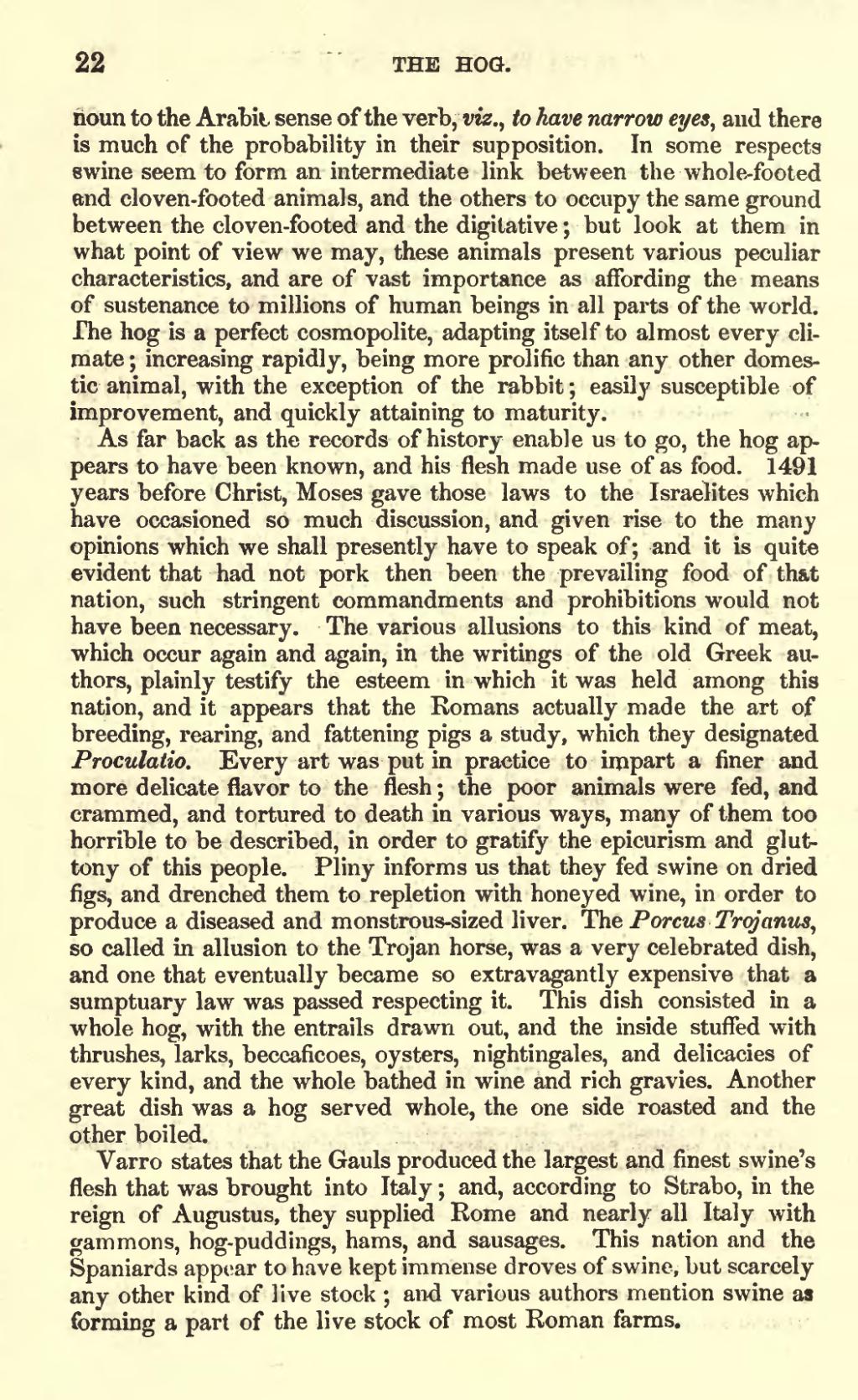noun to the Arabit sense of the verb, viz., to have narrow eyes, and there is much of the probability in their supposition. In some respects swine seem to form an intermediate link between the whole-footed and cloven-footed animals, and the others to occupy the same ground between the cloven-footed and the digitative; but look at them in what point of view we may, these animals present various peculiar characteristics, and are of vast importance as affording the means of sustenance to millions of human beings in all parts of the world. The hog is a perfect cosmopolite, adapting itself to almost every climate; increasing rapidly, being more prolific than any other domestic animal, with the exception of the rabbit; easily susceptible of improvement, and quickly attaining to maturity.
As far back as the records of history enable us to go, the hog appears to have been known, and his flesh made use of as food. 1491 years before Christ, Moses gave those laws to the Israelites which have occasioned so much discussion, and given rise to the many opinions which we shall presently have to speak of; and it is quite evident that had not pork then been the prevailing food of that nation, such stringent commandments and prohibitions would not have been necessary. The various allusions to this kind of meat, which occur again and again, in the writings of the old Greek authors, plainly testify the esteem in which it was held among this nation, and it appears that the Romans actually made the art of breeding, rearing, and fattening pigs a study, which they designated Proculatio. Every art was put in practice to impart a finer and more delicate flavor to the flesh; the poor animals were fed, and crammed, and tortured to death in various ways, many of them too horrible to be described, in order to gratify the epicurism and gluttony of this people. Pliny informs us that they fed swine on dried figs, and drenched them to repletion with honeyed wine, in order to produce a diseased and monstrous-sized liver. The Porcus Trojanus, so called in allusion to the Trojan horse, was a very celebrated dish, and one that eventually became so extravagantly expensive that a sumptuary law was passed respecting it. This dish consisted in a whole hog, with the entrails drawn out, and the inside stuffed with thrushes, larks, beccaficoes, oysters, nightingales, and delicacies of every kind, and the whole bathed in wine and rich gravies. Another great dish was a hog served whole, the one side roasted and the other boiled.
Varro states that the Gauls produced the largest and finest swine's flesh that was brought into Italy; and, according to Strabo, in the reign of Augustus, they supplied Rome and nearly all Italy with gammons, hog-puddings, hams, and sausages. This nation and the Spaniards appear to have kept immense droves of swine, but scarcely any other kind of live stock; and various authors mention swine as forming a part of the live stock of most Roman farms.
